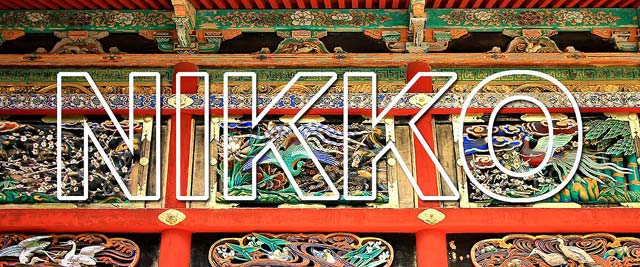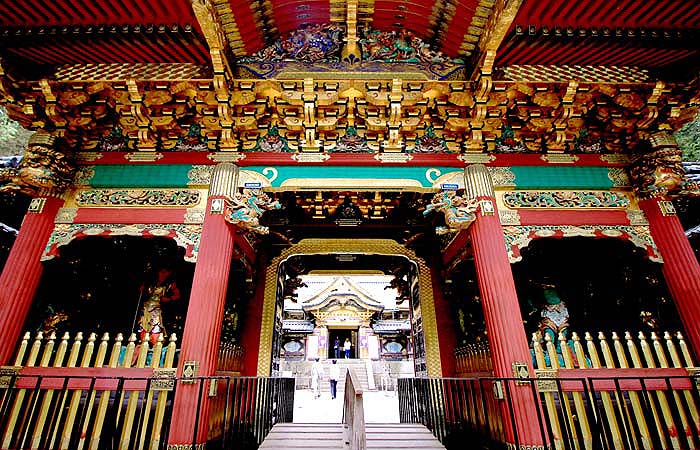


Rinnoji Temple was established in 766. It is currently under renovation but still open to visitors. The photographic replica facade covers the original entrance. Inside the Sanbutsudo (Main Hall) are three figures, Amida Buddha, Senju Kannon with 1000 arms and Bato Kannon with a horse’s head. It was interesting to see restoration work being done on the hollow interior of a large gold leaf statue. Further restoration can be viewed from upstairs. The grounds have a treasure house and garden.

Toshogu Shrine has a grand collection of the most lavishly designed shrines in Japan. Omotemon (Front Gate), red with guardians on each side, is the biggest gate in the Nikko UNESCO World Heritage Site. Step inside and discover more than a dozen structures of remarkable beauty. Spot the three wise monkeys, speak, see and hear no evil, above the door of Shinkyusha, the Sacred Stable. The Yomeimon Gate’s white and gold carvings are awe-inspiring. There are more than 500 intricate carvings and on either side of the main wall are elaborate carvings of birds, trees, etc. Toshogu Shrine was initially built in 1617 for Tokugawa Ieyasu, first shogun. Main buildings rebuilt in 1636.

Secluded in a forest is this enchanting mausoleum. Peaceful and away from the crowds, the decor and atmosphere are fascinating. Richly adorned gates, moss covered stone lanterns and intricately carved halls make this a hidden gem. Near the back of this complex sits Tokugawa Iemitsu’s Mausoleum. It was built in 1653, four years after the third shogun died. The mausoleum is similar in style but smaller in scale to his grandfather’s Toshogu Shrine. It is less crowded than Toshogu, as it is off the main thoroughfare but definitely worth a visit.

Shinkyo Bridge means Sacred Bridge. The iconic red bridge arches across the gushing waters of the Daiya River, with a scenic backdrop of the mountains. Shinkyo Bridge is off a main road and marks the beginning to the shrine and temple district.